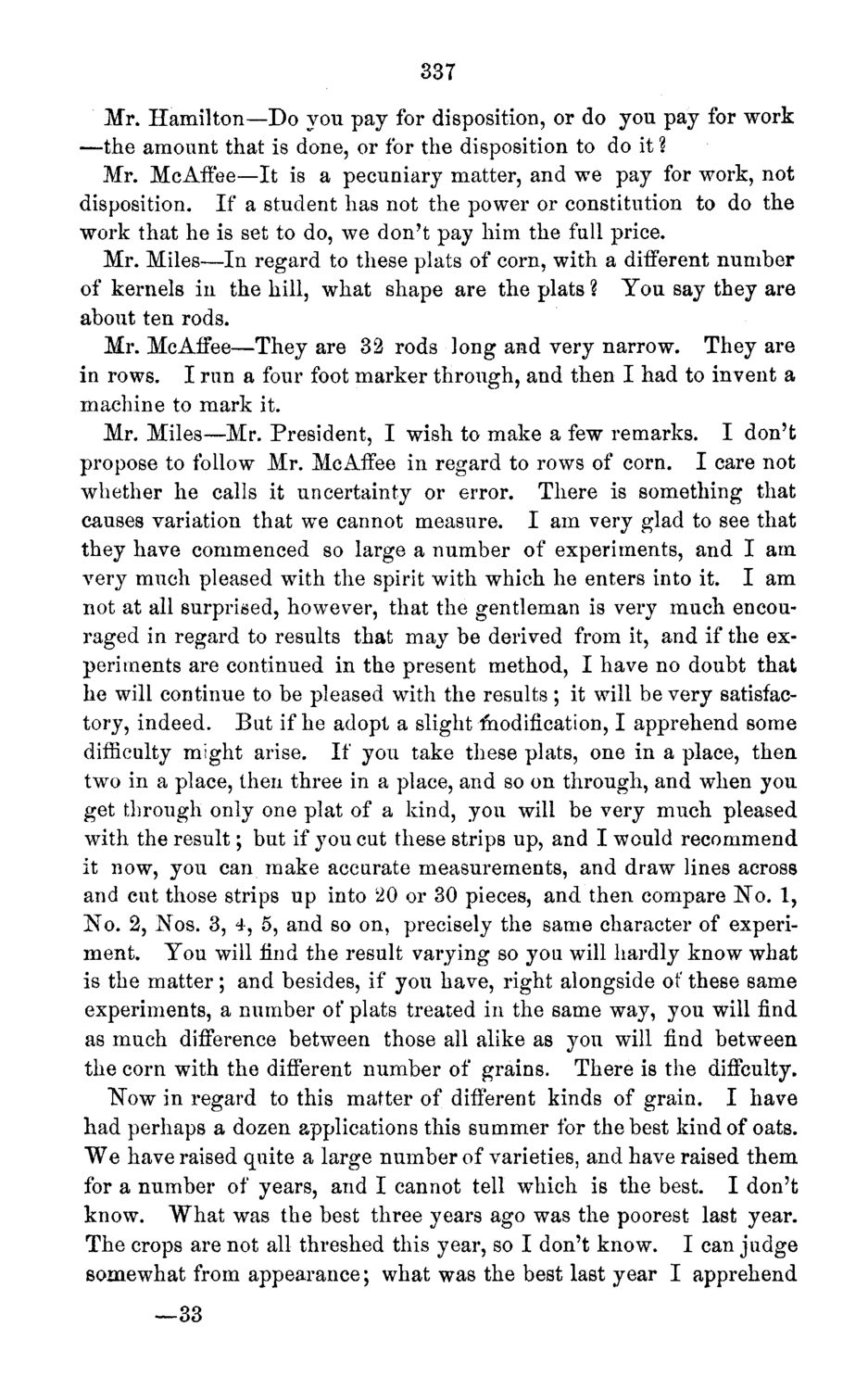| |
| |
Caption: Board of Trustees Minutes - 1871
This is a reduced-resolution page image for fast online browsing.

EXTRACTED TEXT FROM PAGE:
337 Mr. Hamilton—Do you pay for disposition, or do you pay for work —the amount that is done, or for the disposition to do it ? Mr. McAffee—It is a pecuniary matter, and we pay for work, not disposition. If a student has not the power or constitution to do the work that he is set to do, we don't pay him the full price. Mr. Miles—In regard to these plats of corn, with a different number of kernels in the hill, what shape are the plats ? You say they are about ten rods. Mr. McAffee—They are 32 rods long and very narrow. They are in rows. I run a four foot marker through, and then I had to invent a machine to mark it. Mr. Miles—Mr. President, I wish to make a few remarks. I don't propose to follow Mr. McAffee in regard to rows of corn. I care not whether he calls it uncertainty or error. There is something that causes variation that we cannot measure. I am very glad to see that they have commenced so large a number of experiments, and I am very much pleased with the spirit with which he enters into it. I am not at all surprised, however, that the gentleman is very much encouraged in regard to results that may be derived from it, and if the experiments are continued in the present method, I have no doubt that he will continue to be pleased with the results; it will be very satisfactory, indeed. But if he adopt a slight modification, I apprehend some difficulty might arise. If you take these plats, one in a place, then two in a place, then three in a place, and so on through, and when you get through only one plat of a kind, you will be very much pleased with the result; but if you cut these strips up, and I would recommend it now, you can make accurate measurements, and draw lines across and cut those strips up into 20 or 30 pieces, and then compare No. 1, No. 2, Nos. 3, 4, 5, and so on, precisely the same character of experiment. You will find the result varying so you will hardly know what is the matter; and besides, if you have, right alongside of these same experiments, a number of plats treated in the same way, you will find as much difference between those all alike as you will find between the corn with the different number of grains. There is the difficulty. Now in regard to this matter of different kinds of grain. I have had perhaps a dozen applications this summer for the best kind of oats. We have raised quite a large number of varieties, and have raised them for a number of years, and I cannot tell which is the best. I don't know. What was the best three years ago was the poorest last year. The crops are not all threshed this year, so I don't know. I can judge somewhat from appearance; what was the best last year I apprehend —33
| |